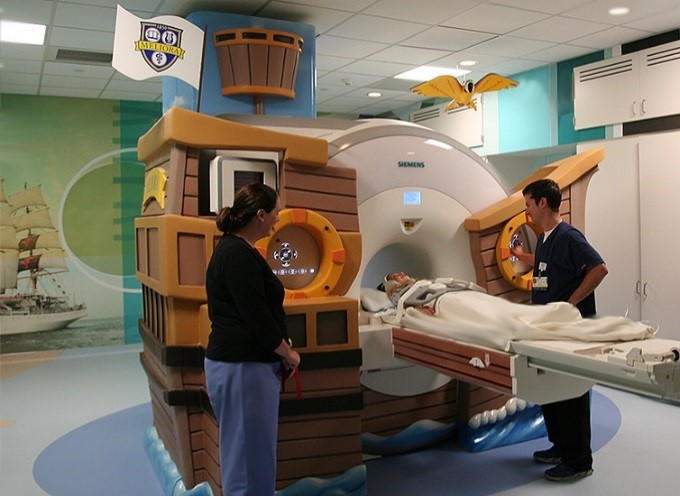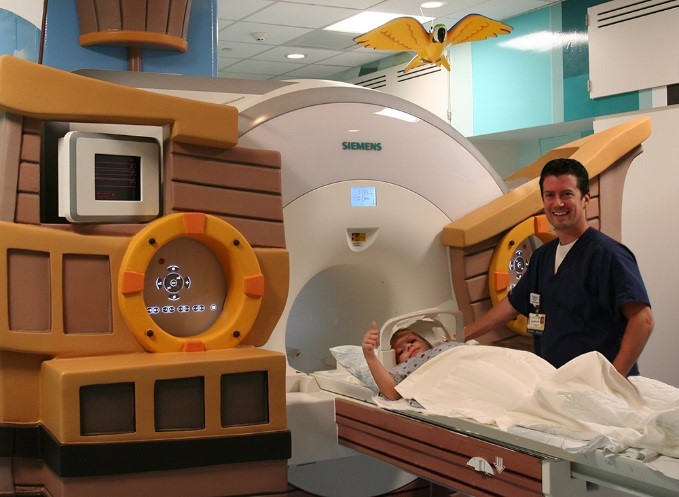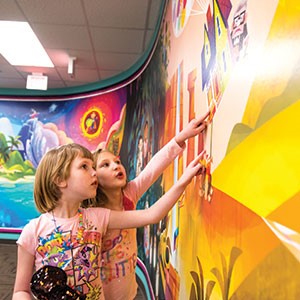Pediatrics has a special charter in experience and engagement


Chelsea Youngquist
Director of Marketing
Improving the care experience of patients is among the top goals of all healthcare organizations. Children’s hospitals have unique challenges and opportunities, given the special needs of young patients and the degree to which families are involved in every aspect of their care.
Patient-centered care is a priority in most children’s hospitals. Staff often spend time examining the experience through the eyes of their patients and families.
Here are a few examples of how children’s hospitals use innovative technology and simple, impactful updates to improve patient experience and engagement.


At the University of Rochester Medical Center’s Golisano Children’s Hospital, New York, a new medical device combines two common scans (an MRI and a PET) so kids have to go through only one procedure. This is the first pediatric facility to have this equipment, and it’s decorated to resemble a pirate ship. Kids can even watch a movie during their scan while “on board” the ship for treatment.
Phoenix Children’s deployed iPads in all patient rooms, personalized for his or her language, age group and family preferences. The iPads are automatically managed so when a patient is admitted or discharged, the in-room iPad routinely wipes clean and resets for the next incoming patient. The initiative has proved so successful that the hospital’s clinics now will have the devices on hand for their outpatients, too.
A donated popcorn machine from years ago has become the “signature scent” of Scottish Rite Hospital, with 6,000 pounds of popcorn popped annually by volunteers. The treat is the hospital’s calling card in various community outreach efforts. Most importantly, it’s another way to get Scottish Rite Hospital patients to forget they’re in a hospital. Other details to improve the patient experience: Medical equipment is not seen in shared areas such as hallways or waiting areas and a large playground in front is open to all children, patients or not.

At University of Iowa Stead Family Children’s Hospital, kids can control their own room including TV, lighting, meal ordering, nurse communication and more. New in-room systems offer easier ways to contact nurses for patients and parents. Another unique patient experience is that the hospital, which is designed in the oblong shape of a football and sits adjacent to the UI Hawkeyes’ Kinnick Stadium, has floor-to-ceiling windows to look down on the stadium. After the first quarter of every home game, everyone in the stadium faces the hospital and waves to the kids who can make it to the 12th floor to watch.
At Johns Hopkins Children’s Center, watch out for young patients zipping around on scooters. Researchers are leading a worldwide movement to reduce sedation for the sickest patients, enabling them to get out of bed to do normal kid stuff. The program, PICU Up!, is based on research that shows kids sleep better at night and recover faster when they’re out and about doing active kid stuff.
Children’s Healthcare of Atlanta has a special, 100% donor-funded program called Canines for Kids, a fleet of 16 specially trained dogs that provide comfort, companionship and joy. Older patients at the hospital can get trading cards that feature the hospital’s pet-therapy dogs so kids can collect all their favorite furry friends.


Texas Children’s is the first hospital to work with Disney on a five-year, $100 million goal of reimagining the patient and family experience. Disney has transformed the hospital into a place that provides comfort and inspiration for kids and families.
The hospital now has mobile movie screens and interactive windows and colorful murals. There are many Disney characters and opportunities for the kids to personalize moments. Patients also can get a magic bracelet that allows them to unlock surprises and content all over the hospital.



